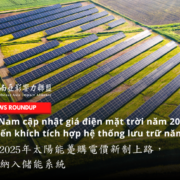Vietnam Introduces 2025 Solar feed-in tariffs (FiTs) to Promote Energy Storage Integration
April 2025 | Southeast Asia Impact Alliance
Vietnam is taking another step toward modernizing its renewable energy sector by unveiling updated feed-in tariffs (FiTs) for solar power, with a notable emphasis on encouraging battery energy storage systems (BESS). This policy move, effective throughout 2025, was formalized through Decision 988/QD-BCT issued by the Ministry of Industry and Trade (MOIT), building upon Circular 09/2025/TT-BCT. These updated FiTs aim to enhance grid reliability while aligning with the nation’s broader energy transition strategy.
Key Features of the 2025 FiT Framework
The most significant development in this update is the introduction of differentiated tariffs for solar power projects that incorporate battery storage. For the first time, solar plants equipped with BESS will be eligible for higher rates to compensate for the added complexity and investment costs. Tariff levels are also region-specific, taking into account solar radiation potential in Northern, Central, and Southern Vietnam.
Power producers will continue to sign long-term power purchase agreements (PPAs) with Vietnam Electricity (EVN), the state utility, under existing contractual frameworks.
Context: Evolving Renewable Energy Policy
Vietnam’s FiT scheme has been instrumental in driving clean energy development since its introduction. Over the years, the policy has undergone several revisions to better reflect market dynamics and infrastructure needs. In 2023, regulatory updates laid the groundwork for a more flexible pricing system, covering both solar and wind energy, including legacy exemptions for older projects.
The current pricing mechanism defines a tariff range, with a maximum ceiling adjusted annually by EVN and the Electricity Regulatory Authority of Vietnam (ERAV), based on market and technical inputs.
2025 Solar Tariff Highlights
The newly approved tariff levels vary based on system type and regional solar intensity. Projects that include energy storage receive a premium compared to those without. The maximum feed-in tariffs (FiTs) rates (excluding VAT) for different configurations are as follows:
| Region | Ground-Mounted (No BESS) | Ground-Mounted (With BESS) | Floating (No BESS) | Floating (With BESS) |
|---|---|---|---|---|
| North | VND 1,382.7 (US$0.053)/kWh | VND 1,571.98 (US$0.060)/kWh | VND 1,685.8 (US$0.065)/kWh | VND 1,876.57 (US$0.075)/kWh |
| Central | VND 1,107.1 (US$0.043)/kWh | VND 1,257.05 (US$0.048)/kWh | VND 1,336.1 (US$0.051)/kWh | VND 1,487.18 (US$0.057)/kWh |
| South | VND 1,012 (US$0.039)/kWh | VND 1,149.86 (US$0.044)/kWh | VND 1,228.2 (US$0.047)/kWh | VND 1,367.13 (US$0.053)/kWh |
To qualify for BESS-specific tariffs, projects must meet technical thresholds such as a storage capacity equal to at least 10% of the plant’s capacity and a minimum 2-hour discharge capability.
Incentives for New Energy Projects
Beyond the feed-in tariffs (FiTs), Vietnam is also offering policy incentives to catalyze investments in innovative energy solutions. According to Decree 58/2025/ND-CP, projects involving 100% green hydrogen or green ammonia can access preferential treatment, including:
-
Exemption from sea and land use fees during the construction phase for up to three years.
-
Reduced usage fees for the following nine years.
-
Output guarantees covering at least 70% of contracted electricity during the loan repayment period (up to 12 years), provided grid conditions and project performance are met.
This signals Vietnam’s commitment to pioneering green fuels alongside solar and wind.
Challenges and Opportunities Ahead
The inclusion of BESS in the feed-in tariffs (FiTs) framework represents a policy shift acknowledging the role of energy storage in addressing Vietnam’s grid congestion and curtailment issues. However, the new tariff levels—particularly in the Southern region, where solar potential is highest—may not be sufficient to attract new investments given rising costs and financial risks.
While Northern Vietnam benefits from higher feed-in tariffs (FiTs) due to lower solar radiation, the overall system still operates on capped tariffs rather than market-based auctions. This may limit the agility of Vietnam’s energy market in responding to investor needs and evolving technology costs.
Still, the direction is clear: Vietnam continues to make strategic regulatory moves that prioritize energy transition, regional equity, and grid modernization. For investors and stakeholders in Southeast Asia, these developments offer both caution and opportunity—underscoring the need for thorough project-level analysis and long-term policy engagement.
Source: EVN
Reference: Vietnam Briefing| Link
Read more from SIA about “Vietnam’s Electricity Industry and things you don’t know”| Link



